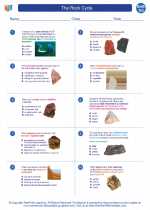Amplitude in Earth Science
Amplitude is a term used to describe the maximum displacement or distance moved by a point on a vibrating body or wave measured from its equilibrium position. In Earth Science, amplitude is commonly associated with seismic waves, ocean waves, and sound waves.
Seismic Waves
When an earthquake occurs, it generates seismic waves that travel through the Earth. The amplitude of these waves is a measure of the maximum displacement of particles as the wave passes, and it is an indicator of the energy released by the earthquake.
Ocean Waves
Amplitude is also important in the study of ocean waves. It is the measure of the maximum height of a wave from its crest to its trough. The greater the amplitude, the more energy the wave carries.
Sound Waves
In the context of sound waves, amplitude is related to the intensity or volume of the sound. Greater amplitude corresponds to louder sounds, while smaller amplitude produces quieter sounds.
Study Guide: Understanding Amplitude
Definition
Amplitude is the maximum displacement or distance moved by a point on a vibrating body or wave measured from its equilibrium position.
Measurement
Amplitude is measured from the equilibrium position to the peak of the wave (crest) or to the lowest point of the wave (trough).
Importance
Understanding amplitude is crucial in analyzing the energy and intensity of various waves, such as seismic waves, ocean waves, and sound waves. It provides valuable information about the strength and impact of these natural phenomena.
Factors Affecting Amplitude
- For seismic waves, the amplitude is influenced by the magnitude of the earthquake and the distance from the epicenter.
- Ocean wave amplitude is affected by wind speed, duration, and fetch (the distance over which the wind has blown).
- Sound wave amplitude is determined by the energy of the sound source and the distance from the source to the observer.
Understanding amplitude is fundamental to comprehending the behavior and impact of waves in Earth Science. It allows scientists to interpret and predict the effects of seismic activity, ocean dynamics, and sound propagation.
.◂Earth Science Worksheets and Study Guides High School. The Rock Cycle

 Worksheet/Answer key
Worksheet/Answer key
 Worksheet/Answer key
Worksheet/Answer key
 Worksheet/Answer key
Worksheet/Answer key
 Vocabulary/Answer key
Vocabulary/Answer key
 Vocabulary/Answer key
Vocabulary/Answer key
 Vocabulary/Answer key
Vocabulary/Answer key
